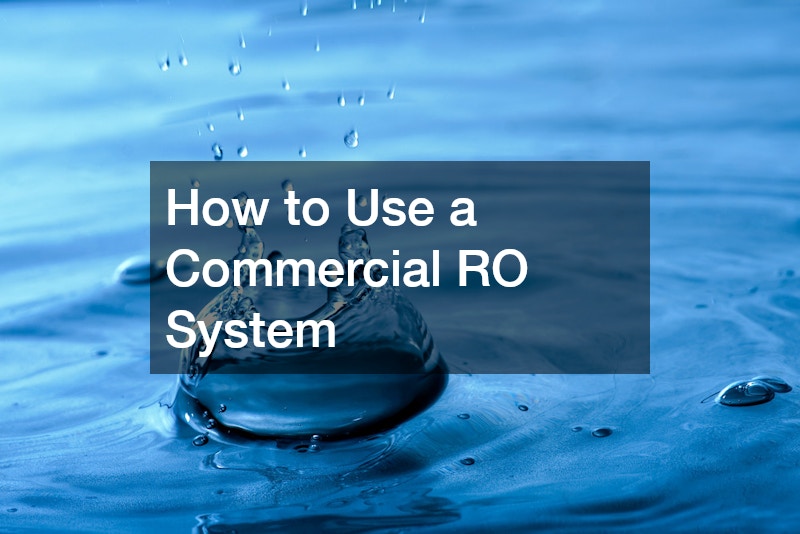A commercial reverse osmosis (RO) system is a highly effective way to purify water by removing contaminants and impurities, making it suitable for use in restaurants, hotels, healthcare facilities, and various industries. These systems work by forcing water through a semi-permeable membrane that filters out impurities, providing clean, filtered water for drinking, cooking, and other uses. Understanding how to use a commercial RO system effectively is essential to ensure its longevity and performance.
Installation and Setup
The first step in using a commercial RO system is proper installation.
While it’s often recommended to have a professional install the system to ensure it’s set up correctly, understanding the basics can help you operate it more effectively. The system should be connected to a water supply, and the filtered water will be routed to the appropriate outlets, such as sinks or ice machines. The installation also includes connecting storage tanks, pre-filters, post-filters, and any pumps required for the specific application.
Before using the system, it’s crucial to flush the filters and the membrane. This process helps remove any preservatives or particles that may have accumulated during shipping. Run water through the system for a specified period (usually recommended in the product manual) before regular use.
Operating the RO System
Once installed, operating the commercial RO system is relatively straightforward. The system automatically purifies water as it flows through the membrane and filters. Most systems are designed with automated controls, meaning they monitor water levels and initiate purification cycles as needed. You’ll need to ensure that the water supply is consistent and that the pressure is within the recommended range for optimal performance.
Maintenance and Filter Replacement
Regular maintenance is key to keeping your commercial RO system running efficiently. Pre-filters and post-filters should be replaced periodically, depending on water quality and usage. Typically, filters need to be changed every six to twelve months, while the RO membrane itself may last two to three years. Some systems come with indicator lights or alarms to notify you when filters need to be replaced. Keeping the filters clean prevents clogging and ensures the system can efficiently remove contaminants.
Monitoring System Performance
To get the most out of your commercial RO system, it’s important to monitor water pressure and quality regularly. Many systems include gauges and TDS (total dissolved solids) meters that help you track the system’s efficiency. Monitoring these readings ensures that the water is being filtered correctly and alerts you to potential issues with the membrane or filters.
.



